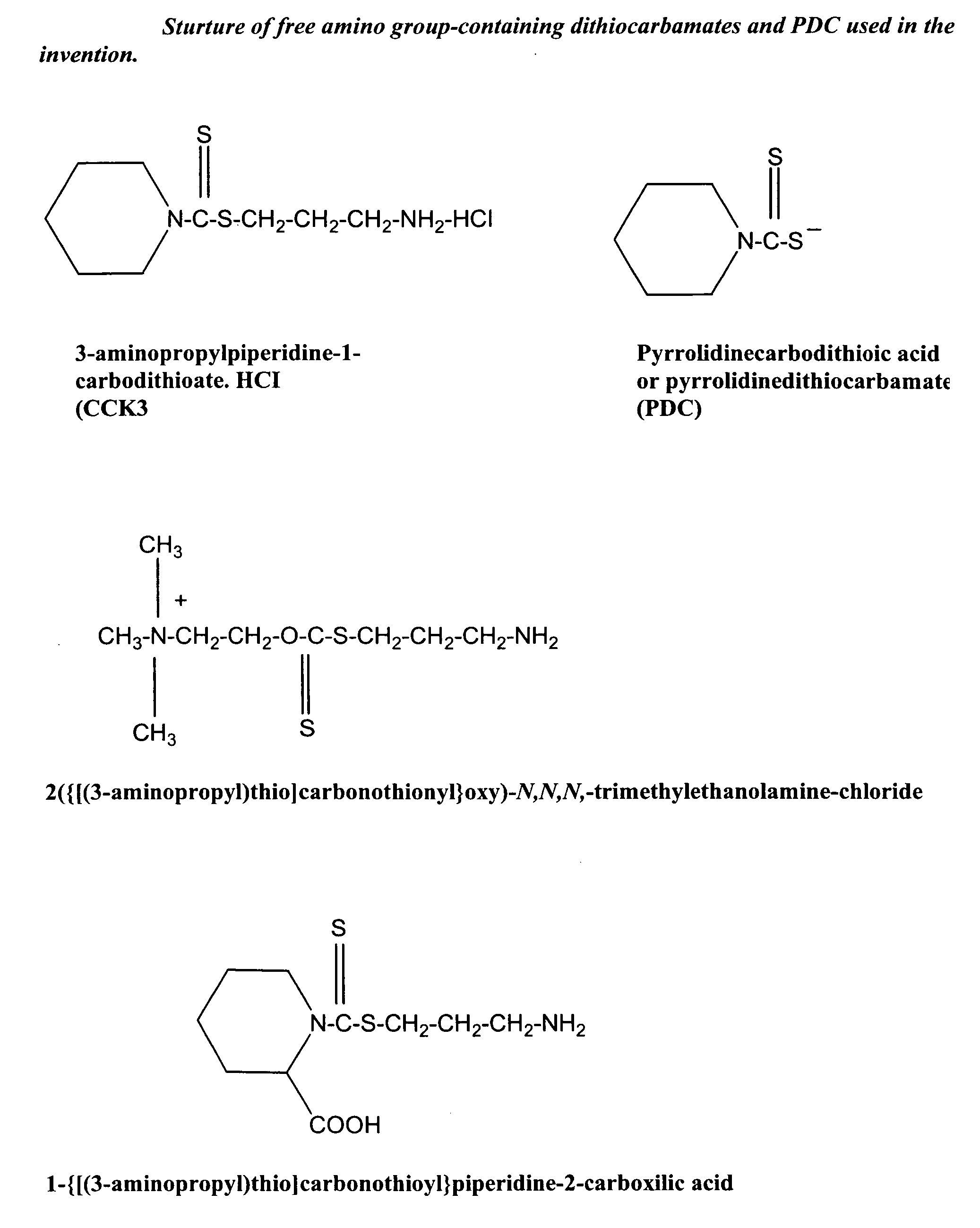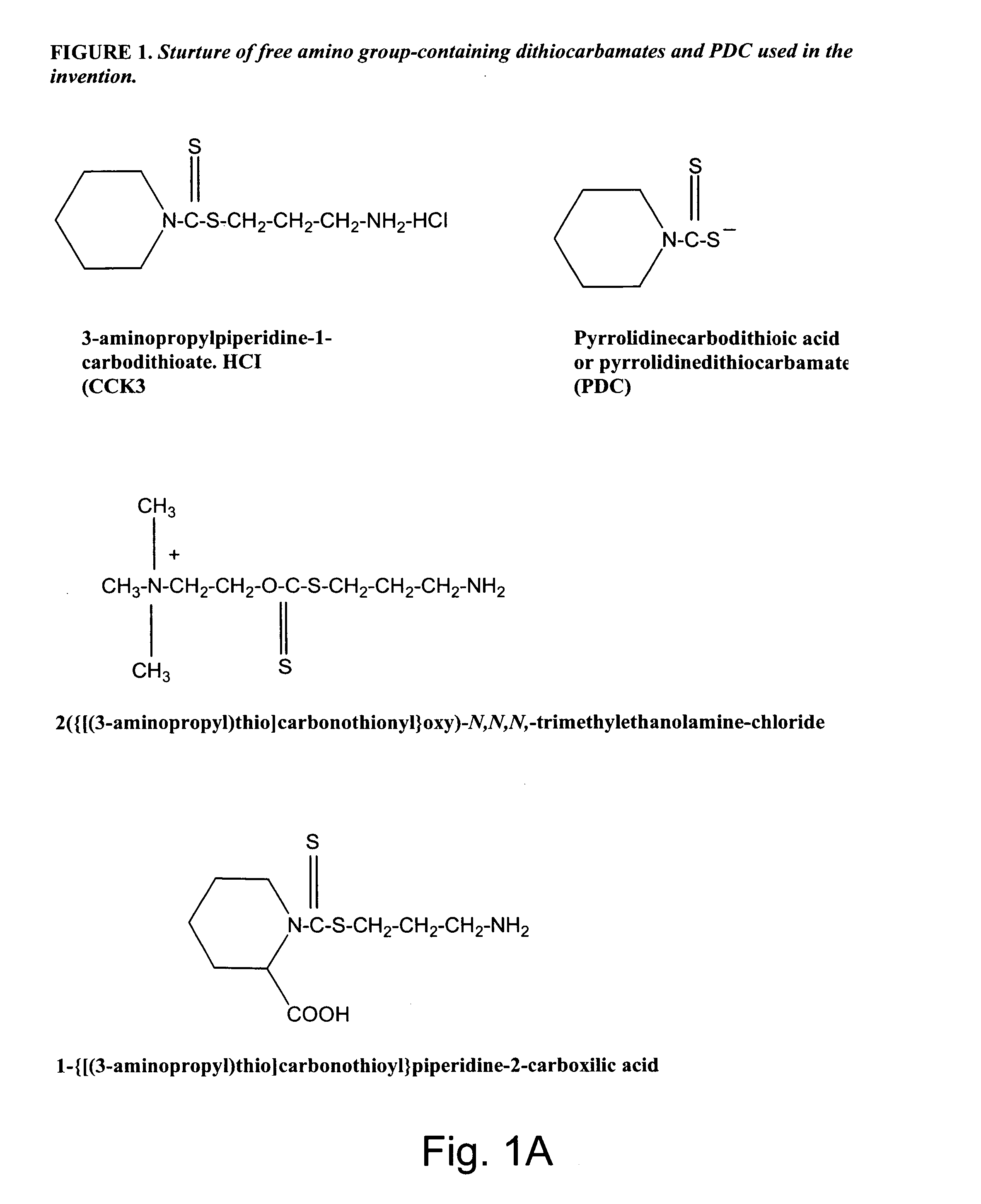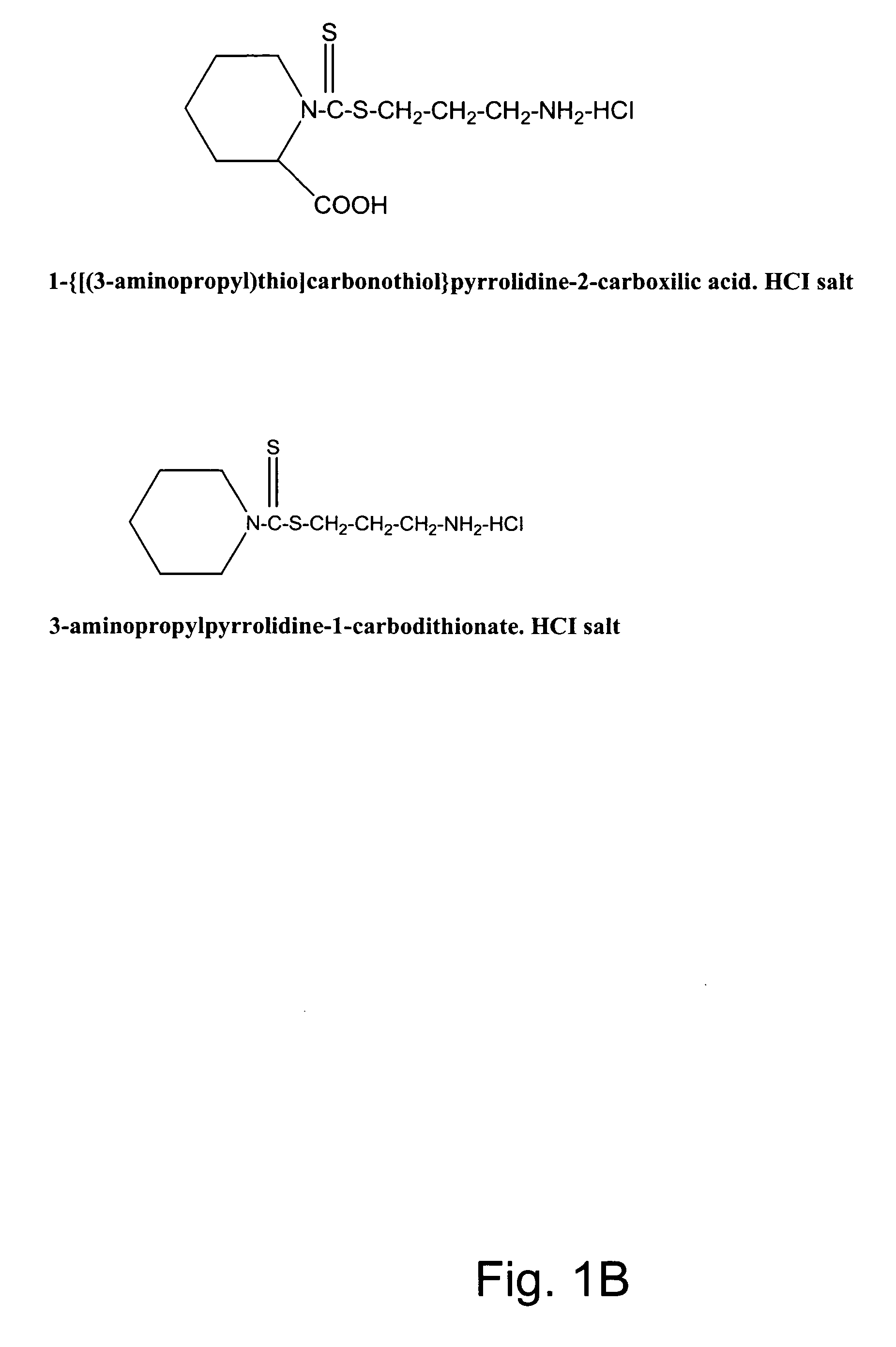Use of one or more metal carriers to selectively kill mammalian cells
a technology of selective killing and metal carriers, applied in the direction of heavy metal active ingredients, drug compositions, peptide/protein ingredients, etc., can solve the problems of inducing rapid death of mammalian cells, and achieve the effect of enhancing the accuracy of delivery of toxic metals and high affinity
- Summary
- Abstract
- Description
- Claims
- Application Information
AI Technical Summary
Benefits of technology
Problems solved by technology
Method used
Image
Examples
example 1
Synthesis of non-protein carrier 3-aminopropylpiperidine-1-carbodithioate.HCl salt (CCK3)
[0074] 20.43-g (0.24 mol) piperidine was dissolved in a mixture of 8.0-g (0.2 mol) of NaOH and 35-ml of water and the mixture was cooled to 0-2° C. Then 0.2 mol of CS2 was added drop-wise over one hour period with intensive stirring of the mixture. This was followed by the stirring of the mixture for four additional hours at room temperature (22° C.). The precipitated N-piperidinedithiocarbamic acid was dissolved in 200 ml of water, filtered, mixed with 300 ml of acetone, and kept overnight at 4° C. The white precipitate was filtered, washed twice with ice-cold acetone, and dried. Seventeen g of N-piperidinedithiocarbamic acid was dissolved in 20-ml of water and slowly mixed with 0.011 mol (in 10 ml water) of 3-chloropropylamine (HCL salt). After stirring the mixture for an additional 4 hours period, the mixture was kept overnight at 4° C. The precipitated CCK3 compound was filtered, washed wit...
example 2
Preparation of MTLP-25
[0075] The sequence of the MTLP-25 peptide is as follows:
(SEQ ID NO: 1)Ac-K(ε-NH2)-DCGCSGASSCNCGSGCSCSNCGSG-NH2.
This structure allows the use of terminal NH2 group to bind selected targeting units via amide bond. The peptide was synthesized on MBHA resin (0.56 mmol / g) in 0.1 mmol quantity with Boc-strategy by automatic peptide synthesizer (AB 410). The tri-functional amino acids were protected as follows: Boc-Cys(Mbzl), Boc-Ser(Bzl) and Boc-Lys(Fmoc). For coupling, the DCC / HOBt method was used. After the coupling was complete, the protected peptide, still on the resin, was removed from the synthesizer. The N-terminal amino group was acetylated with the acetyl-OPFP activated ester and the ε-amino group was liberated from the Fmoc group of the N-terminal lysine. In the next step, the side function groups and the peptide were removed from the resin by using HF and scavengers. The solution, which had the pH of 2.0, was divided into three parts. One part was lyo...
example 3
Demonstration and Quantification of Cell Death
[0076] Cells which lost viability do not synthesize DNA. To quantify cell death, around the time when significant and characteristic morphological changes took place, cells were pulse-labeled for 30 min. with [3H]thymidine to measure DNA activity as described in [Tomono, M. Crilly, K. S. and Kiss, Z. (1995) [Synergistic potentiating effects of choline phosphate and ethanolamine on insulin-induced DNA synthesis in NIH 3T3 fibroblasts. Biochem. Biophys. Res. Commun. 213, 980-985]. Also, cells were collected by making cell suspensions with trypsin, followed by re-plating using fresh tissue culture medium. If no viable cells were obtained after 1 week in culture, it meant that the cells at the time of re-plating were practically 100% dead. Survival values obtained with untreated cells were considered 100%. For the determination of relative number of viable cells after treatments, the MTT assay was used. This colorimetric assay is based on t...
PUM
| Property | Measurement | Unit |
|---|---|---|
| concentration | aaaaa | aaaaa |
| concentration | aaaaa | aaaaa |
| molecular weight | aaaaa | aaaaa |
Abstract
Description
Claims
Application Information
 Login to View More
Login to View More - R&D
- Intellectual Property
- Life Sciences
- Materials
- Tech Scout
- Unparalleled Data Quality
- Higher Quality Content
- 60% Fewer Hallucinations
Browse by: Latest US Patents, China's latest patents, Technical Efficacy Thesaurus, Application Domain, Technology Topic, Popular Technical Reports.
© 2025 PatSnap. All rights reserved.Legal|Privacy policy|Modern Slavery Act Transparency Statement|Sitemap|About US| Contact US: help@patsnap.com



